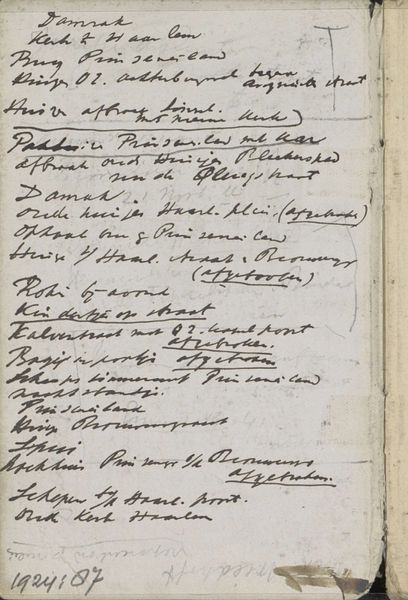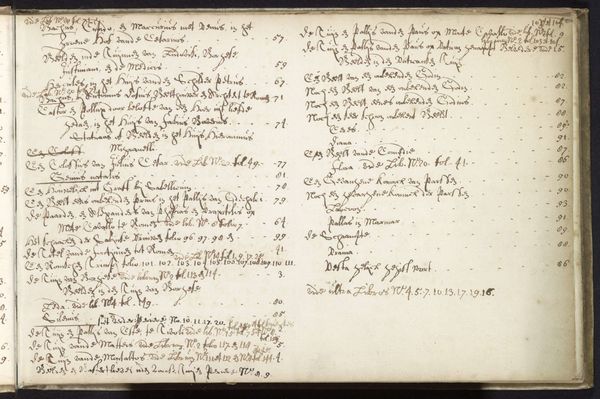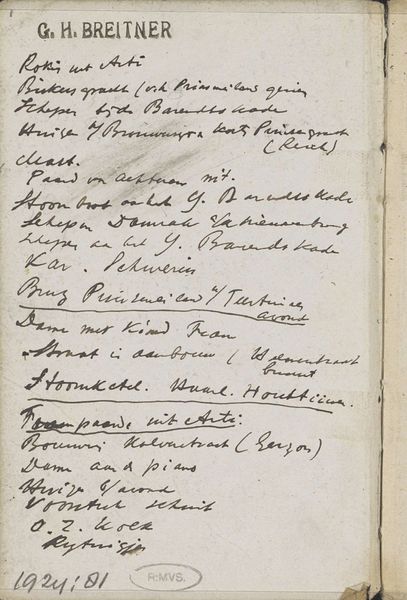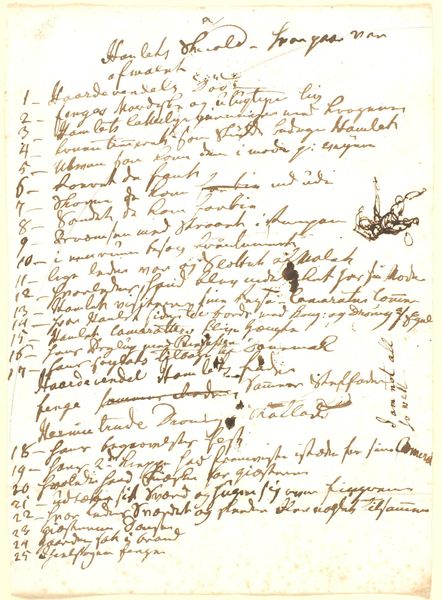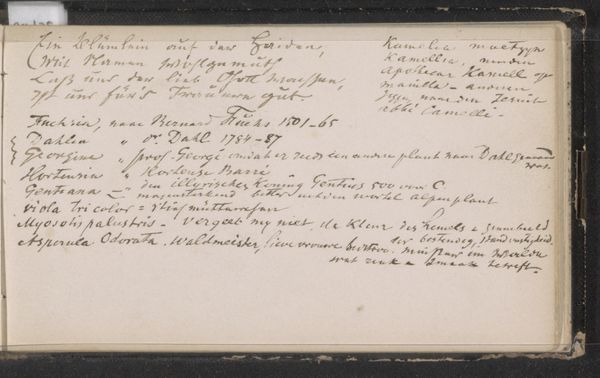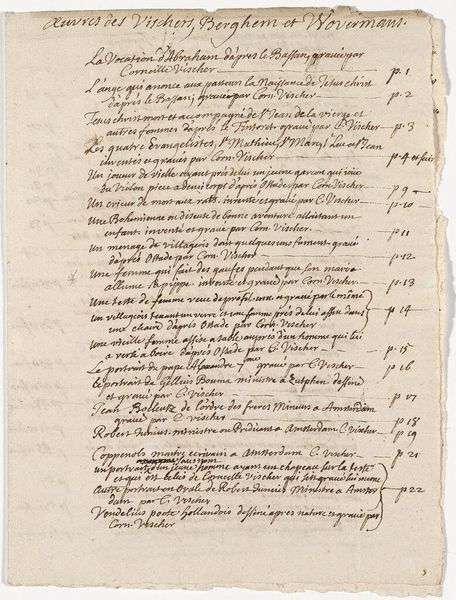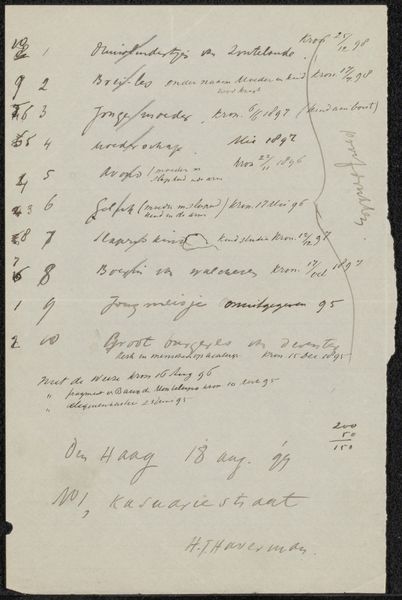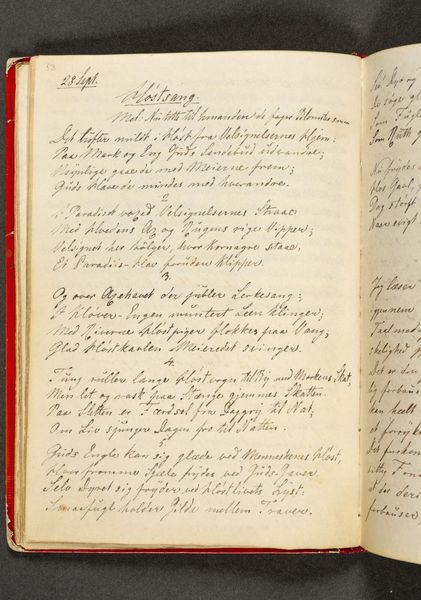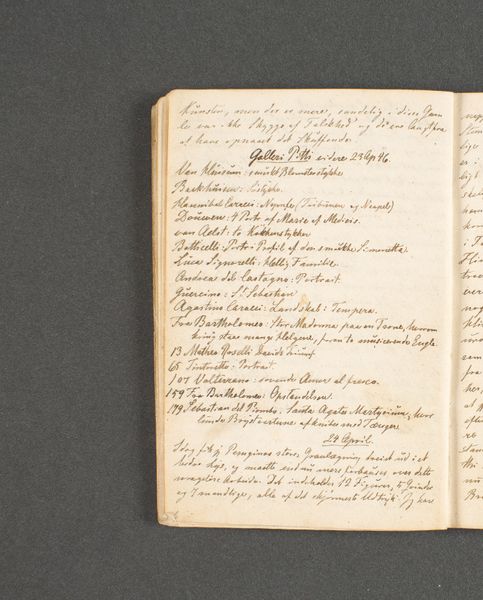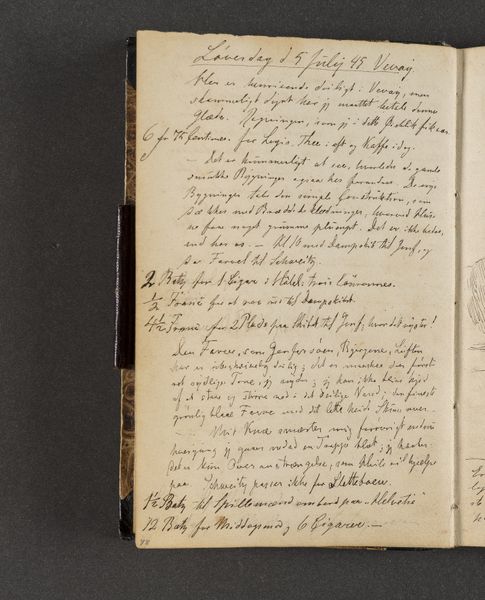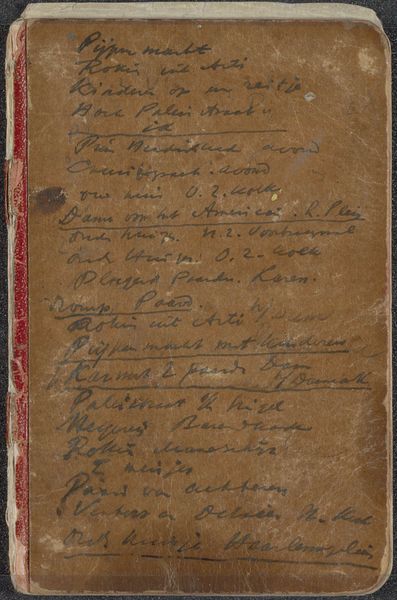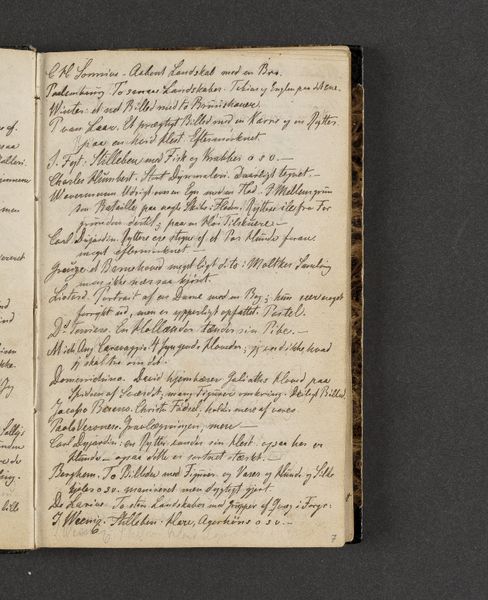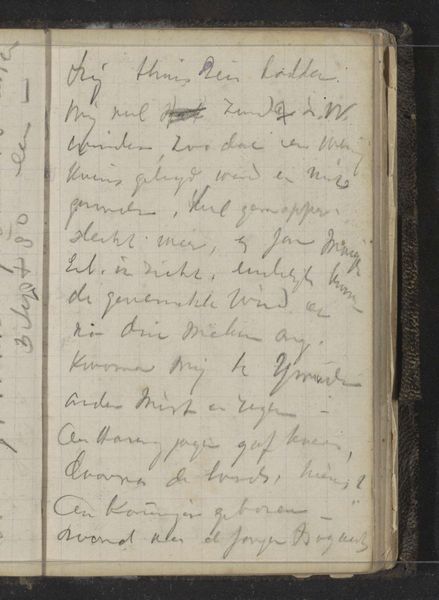
drawing, paper, ink
#
drawing
#
paper
#
ink
Copyright: Rijks Museum: Open Domain
Curator: We’re looking at "Annotaties," a page from a sketchbook by George Hendrik Breitner, created around 1903. It’s ink on paper, held in the Rijksmuseum collection. What’s your immediate sense of it? Editor: Well, it looks like a personal shopping list to me! On first glance, there’s this sense of almost frenetic energy – the script is flowing and the content jumping from location to location. There is also a certain sense of poetry there. It feels so deeply rooted in its time and place. Curator: Breitner was indeed known for his intense observation of Amsterdam. As the title implies, "Annotaties," meaning annotations or notes, this wasn't meant to be viewed as an artistic accomplishment itself. It gives insight to Breitner's artistic process through a symbolic lens, cataloging urban impressions which might be incorporated in later works. Editor: Precisely. These seemingly mundane notes about places could actually represent deeper themes Breitner was exploring. Given that his career spanned a period of intense industrialization and social change in Amsterdam, maybe these streets held symbolic weight related to those transformations. I find myself wondering if certain entries were also locations of political demonstrations, the kind of upheaval and unrest he felt deeply connected to and represented in other works. Curator: The specific choice of words and streets becomes meaningful. "Damrak," mentioned several times here, as a major canal in the city, would signify transit and change, reflecting Breitner’s interest in modern life and movement. His decision to document it also connects to his project to register historical details as the city modernized. In the same way, street names may contain memory and significance within the artist’s own biographical psychology. Editor: Yes, and by focusing on such commonplace details, the act of annotation almost becomes a subversive act of resistance against the dominant, idealized narratives of urban progress. This ordinary, often ignored part of a city’s topography—the names themselves—suddenly become monumental, revealing the narratives of those who exist within it. And as women navigated this space more prominently at the turn of the century, were these locations somehow related to increased social opportunities, like leisure and pleasure, at the time? The fact that it is a sketchbook provides some support for such a hypothesis, given that sketchbooks were typically tools for documenting one’s impressions and experiences. Curator: These notations provide insight into Breitner’s mind—linking physical locales with cultural values and artistic endeavors. We can see that his notations may be portals into societal shifts, revealing the rich emotional geography embedded within everyday experiences. Editor: It shows how we all create and inscribe our own personal maps into our environment. As for the list I suppose, it’s much like us right now as we observe "Annotaties."
Comments
No comments
Be the first to comment and join the conversation on the ultimate creative platform.
